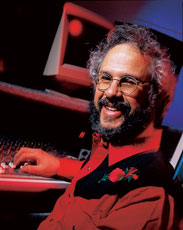By Steve Oppenheimer
(April 1998)
There’s nothing quite so reassuring as a handful of hardware. Don’t get me wrong; I am very much at home with computers, and I appreciate the flexibility and features that quality software provides. When it comes to precision editing, automating your work, and storing every aspect of it, computer-based systems are unbeatable.
But doing everything with software has its drawbacks. Have you ever tried to edit for extended periods and then mix in real time – controlling levels, effects, EQ parameters, and so on – using only computer input devices? After a few hours of that, I hate meeses to pieces! I fancy a fine fader. Hardware controllers, such as MIDI fader boxes, make mixing and adjusting software parameters bearable. (In fact, a MIDI fader box is useful for controlling some hardware units with small displays and brutal interfaces.)
Physical controllers aren’t the only advantage of hardware devices, of course. For one thing, discrete hardware components don’t have to compete for system resources. Even with your hot, new 300 MHz PowerPentium Macintel CPU, you know you will find a way to burn every cycle and come up craving more. And how often does an outboard effects processor crash and burn? Compare that to using a DSP plug-in with audio recording software.
If you’ve been around this block a few times, you get the point: to take full advantage of both worlds, you need to integrate them into one working studio.
So when I told a few friends that we were doing a major piece on some very cool software synthesizers (see “Software Synths on Parade” on p. 68), I was dismayed to get responses like “So I guess this means hardware synths are obsolete now, right?” Now, there’s no doubt that some of these software synths are potent dope for sound-design junkies. But as you’ll learn, they have their drawbacks, too. Hardware versus software? I’ll take some of each, thank you!
On the other hand, you could just go the hardware route. Take one keyboard workstation, add a 2-track recorder and headphones, mix well with two audio cables, and you have an instant studio that is capable of recording instrumental music in very little time and can be used live, as well. Of course, your keyboard workstation can also be the starting point of a much larger studio – with or without a computer. If that seems more your style, sample “Workhorse Workstations” on p. 50.
Speaking of samples, this month, as part of a Reviews redesign that began with our January 1998 issue, we have reincarnated our Quick Pick reviews, which last appeared in the May 1991 EM. Quick Picks are short reviews that get right to the point in 500 words or less, with one “Overall” EM Meter. This allows us to cover three or four products in the space we formerly allocated to one large review. This new Reviews subsection will he a great place to check out sample libraries, though they will not be the only products you’ll find there.
Quick Picks bring us a step closer to our goal of making EM a complete resource for the personal studio owner.
